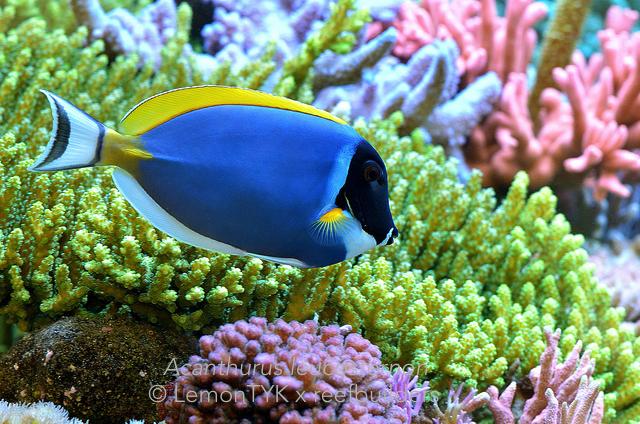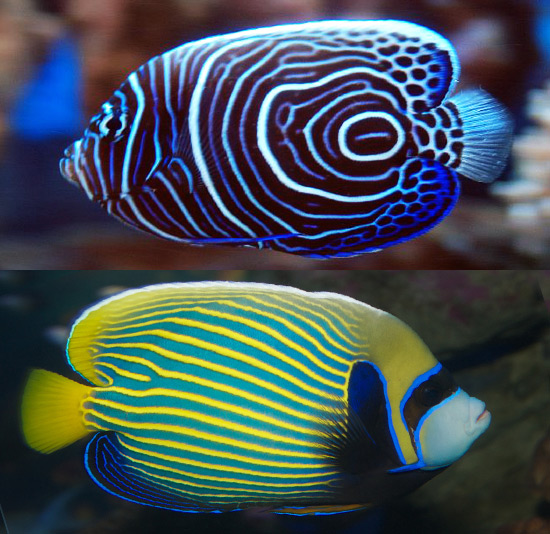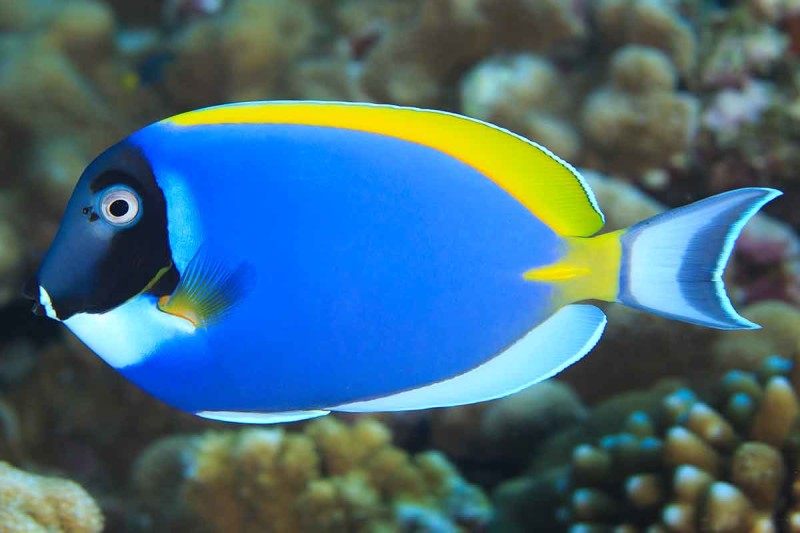Reefkeeping is a paradox. We set up an aquarium to display all the wonderful diversity of the tropical oceans, only to be told that we can’t keep the vast majority of species in our tanks. I helped out in my LFS at the weekend and the following two species are the two that I was asked for the most, only for me to deliver the grim news that they couldn’t have them. And here’s why.
Powder blue tangs
Powder blues are stunning fish that are always on reefkeeper’s want lists. They’ve got the kind of shape, color, and pattern that you would never get with any tropical freshwater fish. They look lovely.
The big problem is their susceptibility to Ich. They are incredibly prone to Cryptocaryon irritans and although retailers can keep it at bay in their own tanks with copper, UV and other treatments, the number of Powder blue tangs that get marine Whitespot after being introduced to a new tank is virtually 100%.
Once your fish has it, other fish in the tank may become infected with it and all the good, solid progress you’ve been making with your new reef tank will be ruined.
And when you have Ich you only really have three choices. Option 1 is to treat with a reef safe parasite treatment which by definition has to be mild so as not to harm other inverts in the tank. Option 2 is to catch the infected fish and place it in a hospital tank where you can use copper-based treatments to try and cure the Ich.

But that usually means removing all the rockwork to catch the fish, setting up a short term tank which itself may cause extra stress to the fish, and it also brings its own set of maturation problems because you’re placing a fish into a day-old tank.
Option 3 is to remove all inverts from the main tank and treat the whole system with a copper-based medication. You’ll have to pull the whole tank apart to do it though and you’ll lose all your microfauna too.
Fitting a UV sterilizer can help reduce free-swimming pathogen numbers but we run far too little UV and way too high a flow rate to be effective on Whitepot parasites, and lots of UV owners still contract the disease.
Then once you’ve cured the Ich you will struggle to keep weight on your powder blues and adults can be territorial towards any other tangs you want to introduce. Choose a Zebrasoma tang instead.

Emperor angelfish
Everyone wants an Emperor angel. I want an Emperor (I actually want a mated pair,) but they are a bad choice on so many levels.
First with emperors is their 15” size when fully grown. That’s a big ammonia-making machine to have swimming around any tank and what goes in, in terms of food and waste, must come out in the form of nitrate and phosphate. So if you struggle to control nutrients don’t choose Pomacanthus imperator and I wouldn’t recommend any off-the-shelf reef system as being large enough for one.
They’re very active, adults can dwarf even a six-foot, 180-gallon tank, and when people ask me what size tank they need for an Emperor angelfish I tell them a 9x3x3’, 600-gallon aquarium. And I say it with a straight face.
Next is their territoriality. Emperor angels fall into the large angelfish category which means unless paired they are intolerant of their own kind and of other large angelfish species.
Yes, there are always exceptions and like large Central American cichlids if you crowd them or introduce them all as juveniles, or all at once, large angelfish “communities” can sometimes work. Adult angels can cost three figures sums, four figures even for Conspic angels, so trying to mix them may mean a costly mistake in more ways than one.
And lastly, Emperor angelfish aren’t reef-safe. They’ll dine out on all your fleshy LPS corals like Trachyphyllia, Symphyllia, and Acanthophyllia. They can turn on Zoas, Duncan’s, Gorgonians, and if you have a reef tank with perfect parameters, an Emperor angelfish, but corals stop opening, its because the Emperor is picking at them.
SPS-only reefs are the safest for Emperor angels to cohabit but again that’s a lot of food going into what should be a low nutrient system. And to top it all, Emperors are prone to Ich too…



